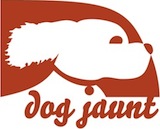Eurostar trains are not pet-friendly, but the U.K., European trains they connect to are
Last week we got word of a new effort to get pets back on Amtrak trains — in a limited way, mind you: the Pets on Trains Act of 2013 [PDF] would allow only small pets in carriers on a single, designated car per train, and larger pets in crates in the cargo area, on trips under 750 miles. It’s an excellent start, however, and I urge you to join me in telling your congressperson you support the Act. Among the comments I got on Dog Jaunt’s Facebook post about the Act was a note from the Facebook page “Allow Pets on Eurostar,” which reminded me that while European trains generally welcome travelers with pets on board, Eurostar is an important, and vexing, exception (you cannot cross the Channel with your pet on a Eurostar train, and while there are workarounds, including ferries and driving a rental car containing you and your pet onto the Eurotunnel Le Shuttle, they’re inconvenient).
Confusingly, the Eurostar route map includes destinations you can only reach by connecting to other European train lines, including TGV and TGV Lyria, Thalys, ICE, Virgin, First Capital Connect, First Great Western, East Coast, East Midlands, National Express East Anglia, SNCB, and SNCF trains. I panicked for a moment, thinking that Eurostar’s wretched pet policy applies to its whole network, but that is not the case. All of these other lines do allow pets on board, and this post gathers together their pet policies (please note that clicking on the name of a service sends you to its pet policy page):
TGV: Small pets in carriers and larger pets both allowed, fee depending on size
TGV Lyria: Ditto, but smaller pets (up to 2) travel free
Thalys: Small pets in carriers travel free; larger pets allowed if leashed and muzzled (fee not stated); pets not allowed on Thalys Neige and Thalys Soleil trains

Fergus on a Thalys train in June 2012 — clearly, the muzzle requirement isn’t carved in stone (Photo by Omid Tavallai)
ICE: The normal rule for Deutsche Bahn trains is that pets travel free if they’re small and in a carrier, or for a fee if they’re larger (leash and muzzle required); I don’t see any special rules for pets on ICE trains, but you’ll want to confirm that
Virgin: Virgin adheres to the National Rail Conditions of Carriage [see Appendix B]. The rules are a little tricky to decipher, but they establish a minimum of pet friendliness that a train company can supplement if it chooses to. Read the rules and talk to Virgin about your particular plans (and pet).
First Capital Connect: No link to give you, but the company is subject to the National Rail Conditions of Carriage; reports suggest that larger pets may travel free
First Great Western: Pets travel “in the guards van in a suitable pet carrier”
East Coast: Small pets in carriers travel free (cannot occupy a seat); ask about fares for larger dogs
East Midlands: Up to two pets can travel free, so long as they do not occupy a seat (small pets contained, dogs contained or leashed)
Greater Anglia (replaced National Express East Anglia in 2012): “Up to two dogs, cats or other small domestic animals can travel with you free of charge provided they do not occupy a seat. For each additional dog, cat or other small animal there will be a charge.”
SNCB: A small pet in a carrier travels free; modest fee for larger dogs on leashes
SNCF: “On some trains, you can bring a pet in a bag (maximum 55 x 30 x 30 cm) for €6. Pets can travel on your lap, or on a leash and muzzled near you, for 50% of a full-fare 2nd-class ticket—even if you travel in 1st class.” That’s a little unclear — the first sentence may just mean that the low fare option isn’t always available, not that small pets in carriers can’t always get on board. Ask questions (and let me know what you find out!).
Except for Eurostar, of course, and also First Great Western, these are policies I can get behind. Please keep in mind that if you have a larger pet, pack not only a leash (always required) but also a muzzle, since it’s often required on European trains.




